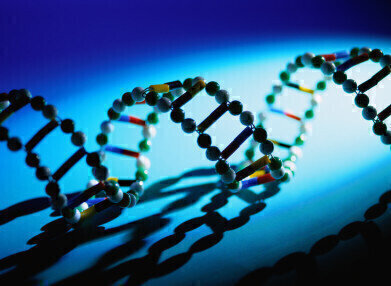News & Views
How to Extract DNA
May 27 2014
Such is the advancement of our understanding of DNA and its properties that it is now used in a wide range of applications. From just a single sample of DNA, scientists are able to test for genetic impurities or diseases, advance medical science or even implicate someone in a crime. Indeed, DNA’s role in the criminal justice system is one that has accelerated over the last few years and the topic is elucidated in more detail here.
How exactly, though, is DNA extracted? Though it may seem complicated, the process is actually a fairly simple one, relying on a number of basic steps which can be completed by you yourself at home.
Step One: Identifying the Sample
In order to extract DNA, you must find a suitable source; and the number one requirement is that the sample is living. Any fruit or vegetable will be perfect for this. Animals and humans are not.
Step Two: Smashing it to Smithereens
The cells of the sample need to be smashed open in order to release the DNA stored inside. This process is often referred to as “cell disruption” or “cell lysis”. This can be achieved in the home with the help of a blender. Adding water makes this process easier.
Step Three: Adding a Detergent
Adding a detergent serves to remove membrane lipids, which you don’t want in your final analysis. Any liquid detergent will suffice. You should also add in a little salt here, which will help to bond the DNA together.
Step Four: Adding an Enzyme (non-essential)
In order to get a better sample of DNA, it is desirable to remove all protein and RNA from the mixture. This can be achieved by adding an enzyme; a common household option is to add meat tenderizer.
Step Five: Getting Rid of Steps Two-Four
You have just added a whole lot of stuff to your sample… now you want to take it away to reveal a more purified sample of DNA. This can be achieved by adding an equal measure of alcohol (cold rubbing alcohol is an excellent choice) as there is of the sample. When adding the alcohol, take care to pour it slowly, down the side of the container, to avoid it mixing with the sample. It should separate out on top, as should a long, stringy substance.
Step Six: Extract the DNA
Using a wooden stick or coffee stirrer, gently lift out that white stringy substance. That is your DNA! And voilà! You’ve extracted the DNA from the fruit/vegetable that you began with.
Digital Edition
Lab Asia 31.2 April 2024
April 2024
In This Edition Chromatography Articles - Approaches to troubleshooting an SPE method for the analysis of oligonucleotides (pt i) - High-precision liquid flow processes demand full fluidic c...
View all digital editions
Events
Apr 17 2024 Tokyo, Japan
Apr 22 2024 Marrakech, Morroco
Making Pharmaceuticals Exhibition & Conference
Apr 23 2024 Coventry, UK
Apr 23 2024 Kintex, South Korea
Apr 23 2024 Seoul, South Korea









.jpg)








